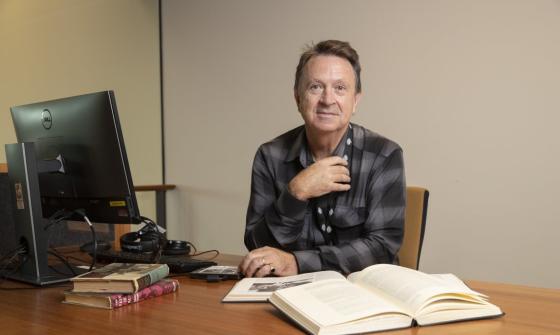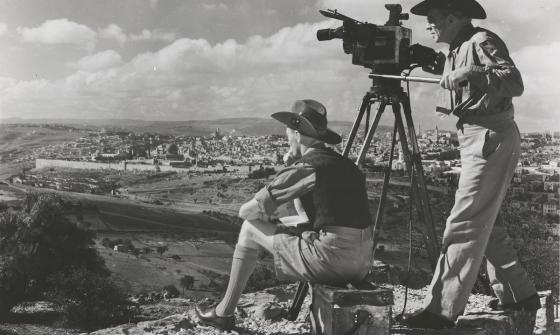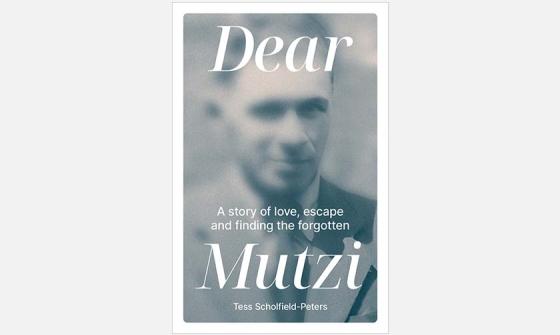Australian artists in the Second World War
Friday 15 August 2025 marks the 80th anniversary of the end of the Second World War, known as Victory in the Pacific or Victory over Japan Day. Some 1 million Australians served in the war. Their experiences were captured in many ways, in diaries and letters, newspaper reports, photographs and artworks. After the war, recorded oral histories, memoirs and histories continued to record their stories.
Our collection holds many of these items. In this blog we explore 2 different examples of artistic responses to the war.
Stanley McAlister
Stanley McAlister (known as “Stan Mac”) began his career as a commercial artist in the 1920s. At the age of just 21, he was already working as an official artist for the Sydney Film House creating advertisements for Australasian Films and J.C. Williamson films.
This poster created in 1927 is an example of Stan Mac’s work. The film is about a French woman who falls in love with a British soldier who is taken prisoner during the First World War.

Stanley McAlister, ‘Advertisement for Mademoiselle from Armentieres’ in Everyones, 19 January 1927, nla.gov.au/nla.obj-576837036
Stanley McAlister, ‘Advertisement for Mademoiselle from Armentieres’ in Everyones, 19 January 1927, nla.gov.au/nla.obj-576837036
His artistic style was well regarded. In a 1925 issue of Everyones, one writer reflected: ‘He shapes well and is earnest and sincere in his work’.
In June 1940, now 37 years old, Stanley McAlister enlisted for service in the Second World War. Posted to the 2/19th Battalion, after a period of training in Australia, he arrived in Singapore in February 1941. In the following February, Stan was taken prisoner when Singapore fell to the advancing Japanese forces.
Whilst a prisoner in Changi Gaol, Stanley used his artistic skills to depict some of his experiences. Through his drawings we get a glimpse of his thoughts and dreams while he was held captive. In one picture he wrote an imagined Christmas dinner menu for the AIF Medical Group in 1942.
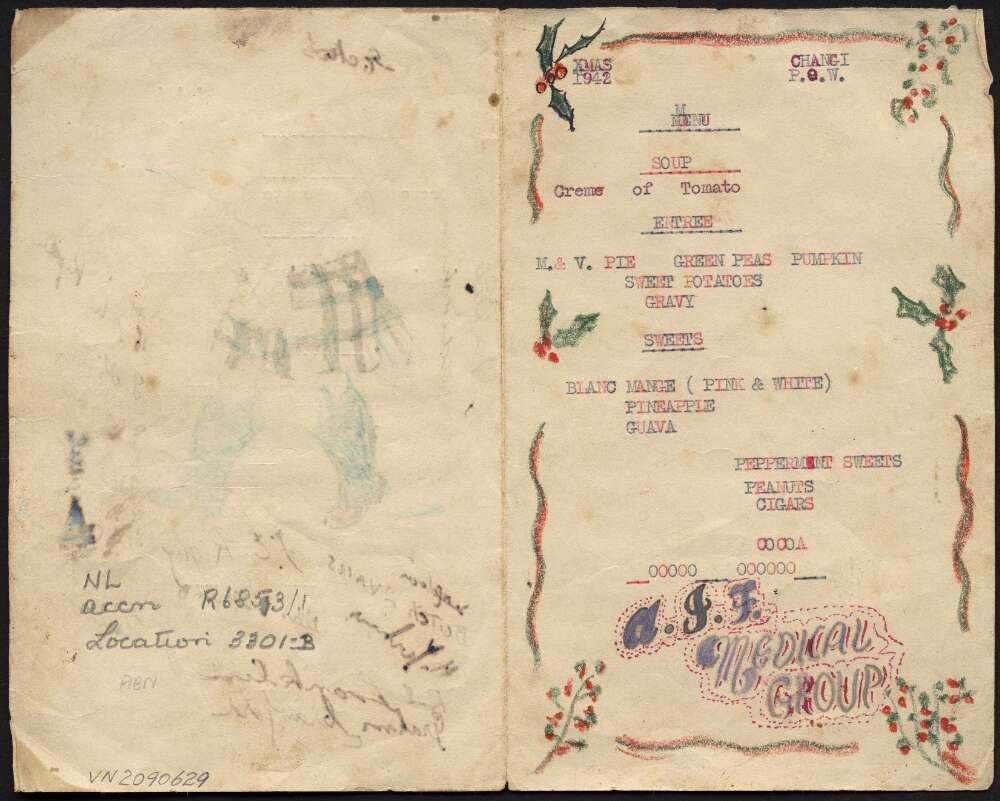
Stanley McAlister, Imaginary Christmas menu, Changi P.O.W. camp, 1942, nla.gov.au/nla.obj-148359202
Stanley McAlister, Imaginary Christmas menu, Changi P.O.W. camp, 1942, nla.gov.au/nla.obj-148359202
Two years later he created another imagined staff menu for the POW Hospital in Kranji.
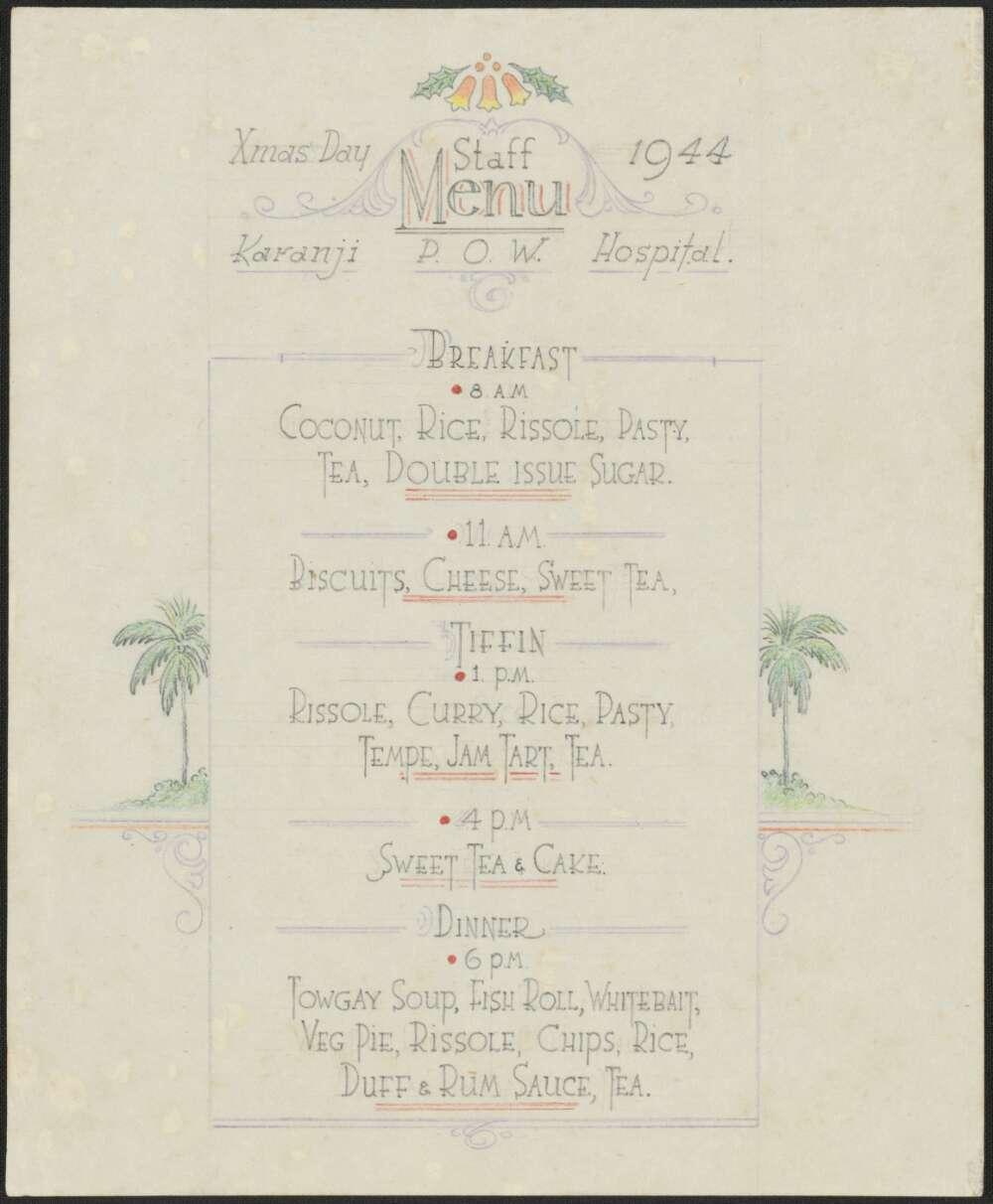
Stanley McAlister, Imaginary Xmas Day staff menu, Kranji P.O.W. Hospital, 1944, nla.gov.au/nla.obj-148358314
Stanley McAlister, Imaginary Xmas Day staff menu, Kranji P.O.W. Hospital, 1944, nla.gov.au/nla.obj-148358314
In another sketch he reflected on dreams of home, which featured an elaborate ‘welcome home’ banquet.
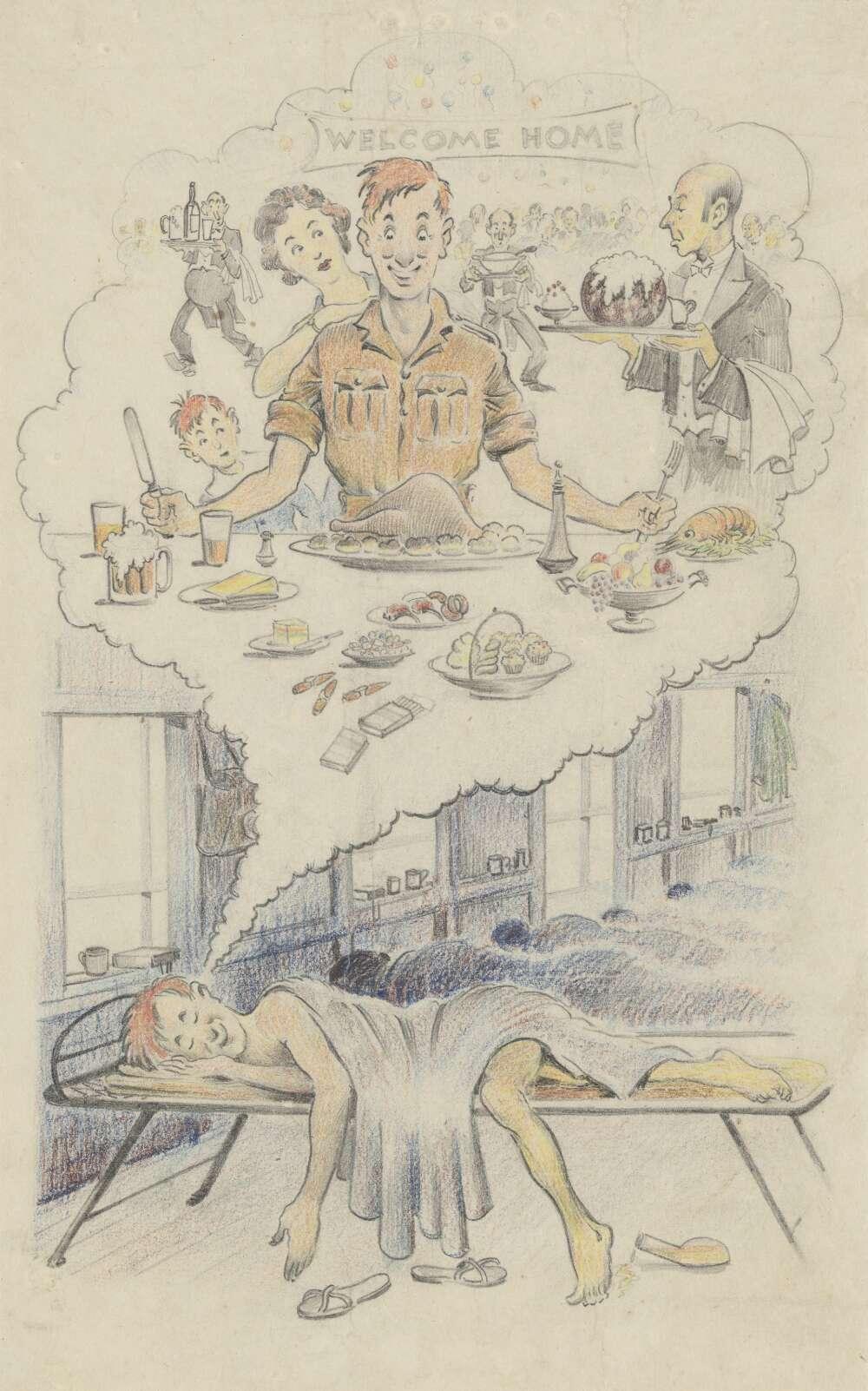
Stanley McAlister, Dreaming of home, c.1944, http://nla.gov.au/nla.obj-148358643
Stanley McAlister, Dreaming of home, c.1944, http://nla.gov.au/nla.obj-148358643
We don’t know if Stanley ever enjoyed the banquet he imagined, but we do know he made it home. He was liberated in Singapore in September 1945 and returned to Australia on board HMAS Duntroon.
Nora Heysen
Artist Nora Heysen also served overseas during the war. Daughter of artist Hans Heysen, Nora Heysen was a significant Australian artist in her own right. In 1938 she was the first woman to win the prestigious Archibald Prize.

Harold Cazneaux, Portrait of Nora Heysen at work,1939, nla.gov.au/nla.obj-145509450
Harold Cazneaux, Portrait of Nora Heysen at work,1939, nla.gov.au/nla.obj-145509450
A few years later, in 1943, she became the first female Australian official war artist. During her appointment, Heysen served in New Guinea for seven months. As an official war artist she completed over 170 works of art.
In an oral history interview, she reflected on the artistic experience of serving as an official war artist in New Guinea.
Well, everyone told me about the colour in the tropics and there wasn't any colour. It was drab, altogether drab. You might see a hibiscus flower every now and again. But where was the colour? Everything was killed or frightened away. No. The women's uniform, that khaki is an awfully drab colour anyway, isn't it? The jungle's a drab colour. Look what Ivor did with it. They were all drab paintings, are they? That was war up there, the drab business.
Viewing their art today
80 years after the end of the war, artworks like Nora Heysen’s and Stan Mac’s still provide a powerful insight into the emotional responses to war expressed through art.

